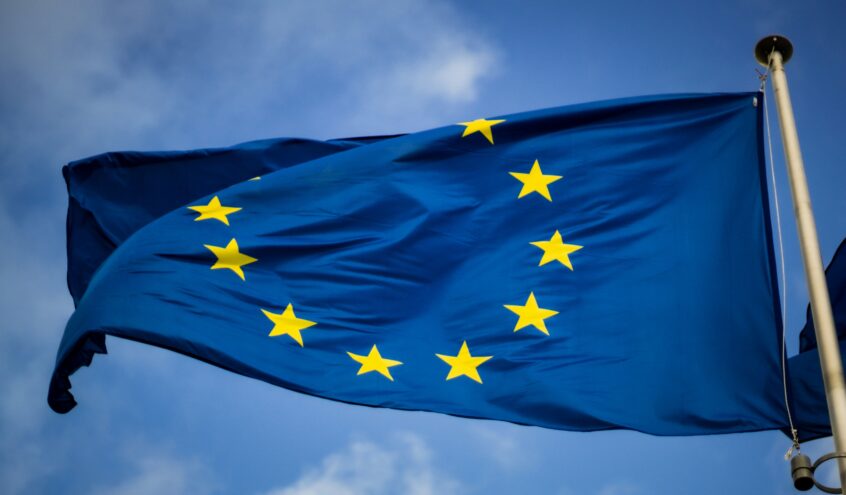The EU Migration and Asylum Pact (the Pact) is a new framework aimed at managing migration and asylum in Europe. Proposed by the European Commission in September 2020, following consultation with various stakeholders, the Pact aims to address challenges and deficiencies observed in the EU’s approach to migration and asylum, which became particularly evident during increased asylum migration to Europe in 2015/2016.
What is included in the Pact and what does it aim to achieve?
The European Commission presented the Pact as a durable framework for managing Europe’s complex migration landscape. The Pact has four main pillars:
Securing external borders: this pillar outlines strategies for securing the EU’s external borders, including pre-entry screening, establishing an asylum and migration database, efficient border procedures for asylum seekers, and crisis protocols. Notably it introduces registration, security and health checks and fingerprinting for the Eurodac database (expanding its use from asylum purposes) for third country nationals with no valid permission to enter EU Member State territory. For international protection applicants, a border procedure will introduce mandatory processes for certain categories of applicants. Those who are processed under the border procedure will not be authorised to enter the State and will be accommodated at designated locations. Their applications, appeals and removal decisions must be processed within three months. Unaccompanied minors and people who have special reception or procedural needs may be exempted from this, with some exceptions. Safeguards will also be required for families with minors. In times of crisis and force majeure situations, limited derogations from asylum procedures would be temporarily available to Member States, such as the option to extend processing times or immediately provide a protection status equivalent to subsidiary protection.
Fast and Efficient Procedures: This pillar aims to streamline asylum procedures with legally binding timeframes and clear standards, ensure the rights of asylum seekers, establish EU-wide standards for refugee status qualifications, and make asylum, return and border procedures quicker and more effective. Under this pillar, mandatory accelerated procedures are proposed for certain categories of international protection applicants such as those coming from countries with a recognition rate of 20% or less or those who present themselves without documentation, with false documentation and those who have crossed the border illegally. In addition, an inadmissibility procedure is proposed for people who have already been granted asylum elsewhere.
Effective systems of solidarity and responsibility: This pillar introduces a permanent solidarity framework to ensure EU countries receive support and share asylum-related responsibilities among Member States. It also clarifies rules on responsibility for asylum applications and aims to prevent secondary movements of asylum seekers. The solidarity mechanism, which is characterised as mandatory but flexible, gives Member States options relating to their contribution, which can take the form of financial contributions, relocations of asylum seekers from countries facing particular pressures, and alternative solidarity measures (such as deployment of personnel or measures focusing on capacity building).
Embedding migration in international partnerships: This pillar focuses on preventing irregular arrivals of people through border management capacity building in partner countries, combating migrant smuggling through partnerships with UN agencies, enhancing cooperation on return and readmission, and promoting legal pathways for migration through the EU Talent Pool and Talent Partnerships. Talent Partnerships have already been launched with Morocco, Tunisia, Egypt, Pakistan and Bangladesh. They will allow people from the countries concerned to come work, study, and train in the EU, developing new skills that can benefit later their countries of origin.
Reactions to the Pact
Reactions to the EU Migration and Asylum Pact have been varied and the long period of negotiation saw renewed discussions on migration management in Europe. While some aspects of the proposed legal framework such as legally binding timeframes for decisions, the Union Resettlement Framework (URF) and independent monitoring mechanisms have been welcomed, criticisms have also emerged. Some stakeholders, including the European Council on Refugees and Exiles (ECRE) have raised concerns about the Pact’s failure to adequately address responsibility-sharing and solidarity among EU member states. The complexity of the proposed solidarity mechanism has been highlighted as a potential obstacle, with calls for stronger incentives for Member State participation. Caution has been advised regarding the screening and border procedures to ensure procedural guarantees, particularly regarding access to asylum rights, protection of vulnerable groups and preventing non-refoulement. Additionally, the issue of statelessness has been raised, with criticism from the European Network on Statelessness (ENS) on the missed opportunity to mainstream statelessness in asylum and migration policies.
What does the Pact mean for Ireland?
Ireland doesn’t participate in the in the adoption of certain EU measures unless it notifies its intention to do so. In April, the Minister for Justice obtained cabinet approval to seek the necessary approvals from the Houses of the Oireachtas to opt in to measures in the Pact. Opting into the Pact will require the full repeal of the International Protection Act 2015, and while Ireland has some of the proposed procedures in place already, changes will be likely. You can read more about this here.
Next steps
Following political agreement at the EU level in December, the EU Migration and Asylum Pact was approved by MEPs in the European Parliament in April. Upon formal approval by the European Council, the associated laws will enter into force, requiring Member States to implement regulations in their national laws within two years.
See more:
- Cabinet greenlights EU Migration and Asylum Pact opt-in approval process
- New Pact on Migration and Asylum: Questions and Answers (2020)
- Timeline of the Pact
- EMN Ad-Hoc Query 2024.3 on Migration Strategies


